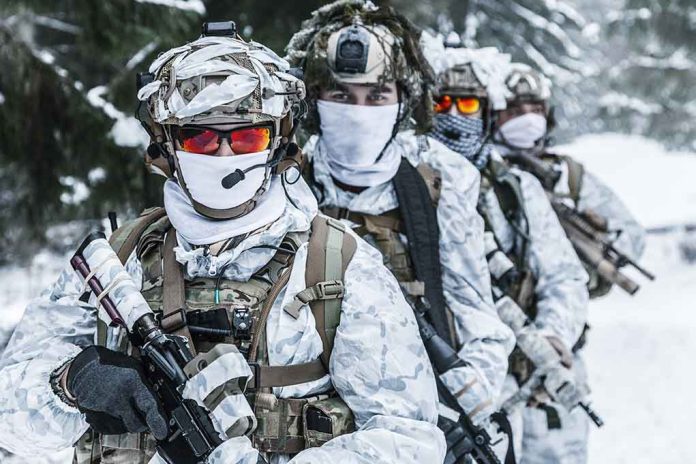
The Pentagon is renewing its Arctic strategy to address emerging geopolitical threats and the impacts of climate change, setting the stage for a significant shift in U.S. defense posture.
At a Glance
- The Defense Department released its 2024 Arctic Strategy.
- The strategy addresses environmental changes in the Arctic and their implications for U.S. security.
- Deputy Defense Secretary Kathleen Hicks emphasized the Arctic’s importance for U.S. homeland defense, national sovereignty, and defense treaty commitments.
- The People’s Republic of China (PRC) is increasing its presence in the Arctic, despite not being an Arctic nation.
- Russia has the largest military presence in the Arctic and is reopening Soviet-era military installations.
Pentagon’s 2024 Arctic Strategy Overview
On [date], the Department of Defense released its updated Arctic Strategy for 2024. The renewed strategy underscores the importance of adapting to the evolving geopolitical climate and the accelerating pace of climate change. Deputy Defense Secretary Kathleen Hicks highlighted the Arctic’s critical role in U.S. homeland defense, asserting that environmental changes in the region have direct implications for national security.
The strategy focuses on three main lines of effort to ensure the U.S. maintains a robust presence in the Arctic. These efforts include enhancing joint force capabilities, engaging with allies and partners, and exercising U.S. presence in the region. Particular emphasis has been placed on improving domain awareness, intelligence, surveillance, and reconnaissance technologies, including the integration of drones and artificial intelligence.
Addressing Geopolitical Threats
One of the key motivations behind the new strategy is countering the growing presence of China and Russia in the Arctic. Despite not being an Arctic nation, China has significantly increased its activities in the region by operating icebreakers and conducting joint operations with Russia. Russia, on the other hand, has the largest military footprint in the Arctic, even going as far as reopening Soviet-era military installations.
Climate change has also opened new sea routes, which results in both risks and opportunities for global commerce and security. The Pentagon’s strategy aims to prepare U.S. forces to operate in these changing conditions, with measures to improve communications, data architecture, infrastructure, and cold weather equipment being integral parts of the plan.
📖 In her new book, @TheWilsonCenter Senior Fellow @GoodmanSherri takes us inside the Pentagon, tracking the evolution of the risks posed by climate change to US national security.
Listen to the full interview here ⬇️ https://t.co/EEbTVBp8hm pic.twitter.com/PPvjJvWa9S
— New Security Beat (@NewSecurityBeat) August 27, 2024
Enhancing Cooperation with NATO Allies
The strategy also stresses the importance of increased cooperation with NATO allies, especially Finland and Sweden, to ensure preparedness in extreme Arctic conditions. NATO’s collective defense principle will benefit from integrating new technologies and conducting joint military exercises to enhance interoperability and operational success.
Additionally, the strategy aligns with the 2022 National Security Strategy, the National Defense Strategy, and the National Strategy for the Arctic Region. These alignments showcase the Pentagon’s commitment to sustaining investments in critical capabilities while monitoring and responding to unfolding developments in the Arctic.










